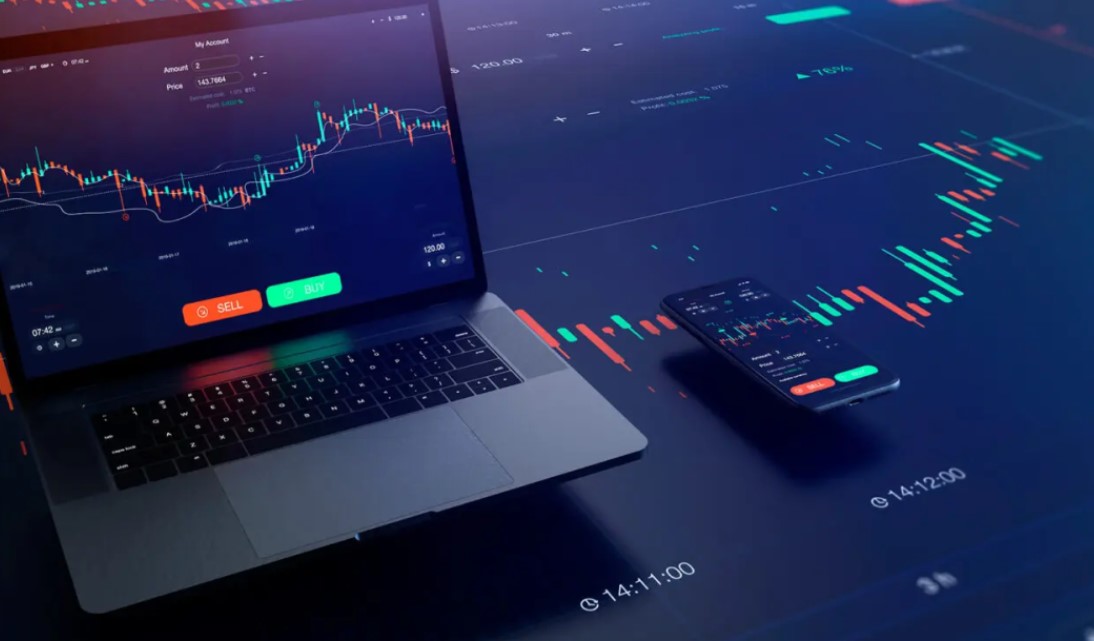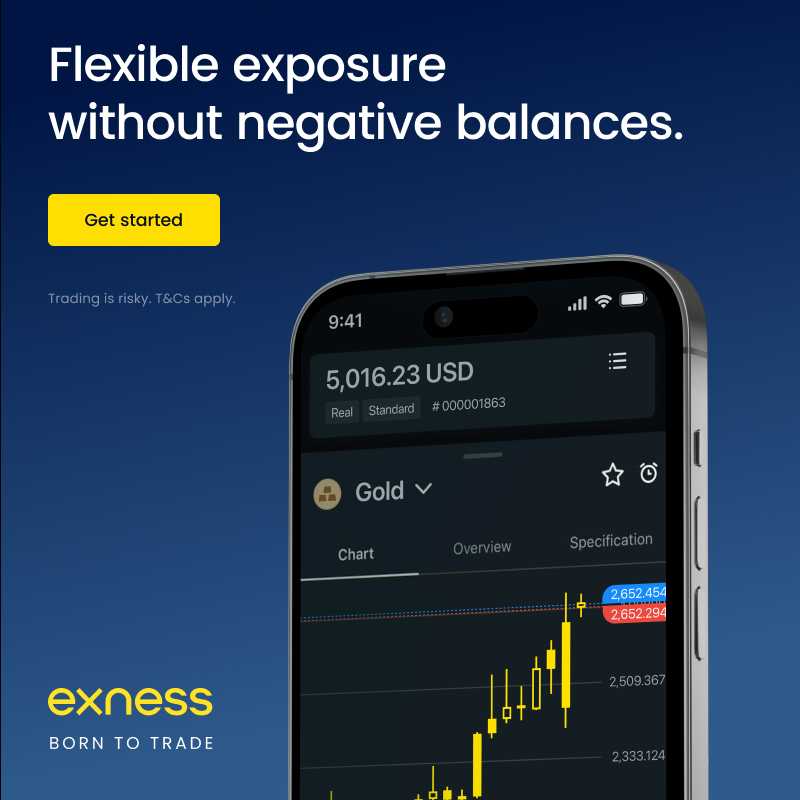
10 minute read
How to Start Forex Trading in India: A Comprehensive Guide
from Exness
by Exness_Blog
Forex trading, also known as foreign exchange trading, is a lucrative yet challenging way to participate in the global financial markets. In India, forex trading has gained popularity as more individuals seek opportunities to diversify their income streams. However, navigating the forex market in India comes with its own set of regulations, risks, and requirements. If you’re a beginner looking to start forex trading in India, this guide will walk you through everything you need to know—from understanding the basics to choosing the right broker and developing a trading strategy.
Top 4 Best Forex Brokers in India
1️⃣ Exness: Open An Account or Visit Brokers 🏆
2️⃣ XM: Open An Account or Visit Brokers 💥
3️⃣ JustMarkets: Open An Account or Visit Brokers ✅
4️⃣ Quotex: Open An Account or Visit Brokers 🌐
What is Forex Trading?
Forex trading involves buying and selling currencies to profit from fluctuations in their exchange rates. The forex market is the largest and most liquid financial market in the world, with a daily trading volume exceeding $6 trillion. In India, forex trading is regulated by the Reserve Bank of India (RBI) and the Securities and Exchange Board of India (SEBI), ensuring that traders operate within a legal framework.
Unlike stock trading, forex trading occurs 24 hours a day, five days a week, as it spans multiple time zones. The major currency pairs, such as USD/INR, EUR/USD, and GBP/USD, are popular among Indian traders due to their liquidity and volatility.
Why Start Forex Trading in India?
Forex trading offers several advantages for Indian traders:
· High Liquidity: The forex market’s massive trading volume ensures easy entry and exit from trades.
· Flexibility: Trade at any time, day or night, thanks to the global nature of the market.
· Low Entry Barrier: You can start with a relatively small amount of capital compared to other investment options.
· Potential for Profit: Leverage allows traders to control larger positions with minimal capital, though it comes with risks.
However, forex trading is not without challenges. It requires knowledge, discipline, and a solid strategy to succeed. Let’s dive into the steps to start forex trading in India.
Step 1: Understand the Legal Framework for Forex Trading in India
Before you begin trading, it’s crucial to understand the regulations governing forex trading in India. The RBI and SEBI have strict guidelines to protect investors and maintain market stability.
Key Regulations to Know
· Currency Pairs: Indian residents are allowed to trade only in currency pairs involving the Indian Rupee (INR), such as USD/INR, EUR/INR, GBP/INR, and JPY/INR. Trading in cross-currency pairs (e.g., EUR/USD) is restricted for retail traders.
· Authorized Platforms: Forex trading must be conducted through SEBI-regulated brokers or exchanges like the National Stock Exchange (NSE), Bombay Stock Exchange (BSE), or Metropolitan Stock Exchange (MSE).
· No Leverage for Retail Traders: Unlike global forex markets, retail forex trading in India does not permit high leverage. Trades are typically settled on a T+2 basis.
· FEMA Compliance: The Foreign Exchange Management Act (FEMA) governs all forex-related activities in India. Ensure your trading activities comply with FEMA to avoid legal issues.
Important Note
Trading with unregulated offshore brokers is illegal in India and can lead to penalties. Always choose a SEBI-registered broker to stay compliant.
Step 2: Educate Yourself About Forex Trading
Forex trading is complex, and success depends on a strong foundation of knowledge. Before risking your money, invest time in learning the basics.
Key Concepts to Understand
· Pip: A pip is the smallest price movement in a currency pair. For example, if USD/INR moves from 83.50 to 83.51, that’s a one-pip movement.
· Leverage and Margin: Leverage allows you to control a larger position with a smaller amount of capital. However, in India, leverage is limited for retail traders.
· Spread: The difference between the bid and ask price of a currency pair. Lower spreads mean lower trading costs.
· Technical and Fundamental Analysis: Technical analysis involves studying price charts, while fundamental analysis focuses on economic indicators like interest rates and GDP.
Resources for Learning
· Books: “Currency Trading for Dummies” and “Technical Analysis of the Financial Markets” are great starting points.
· Online Courses: Platforms like Coursera, Udemy, and Babypips offer beginner-friendly forex trading courses.
· YouTube Channels: Channels like Trading 212 and Rayner Teo provide free, high-quality tutorials.
· Demo Accounts: Practice trading with virtual money to gain experience without risking your capital.
Step 3: Choose a SEBI-Regulated Forex Broker
Selecting a reliable broker is one of the most critical steps in starting forex trading in India. Since offshore brokers are not permitted, you must choose a SEBI-regulated broker or a platform affiliated with recognized exchanges like NSE or BSE.
Factors to Consider When Choosing a Broker
· Regulation: Ensure the broker is registered with SEBI and operates within RBI guidelines.
· Trading Platform: Look for user-friendly platforms like MetaTrader 4 (MT4) or MetaTrader 5 (MT5), which offer advanced charting tools and automation.
· Fees and Spreads: Compare transaction fees and spreads to minimize trading costs.
· Customer Support: Opt for a broker with responsive customer service, preferably with 24/5 support.
· Account Types: Check if the broker offers account types suitable for beginners, such as micro or demo accounts.
Popular SEBI-Regulated Brokers in India
· Exness: Known for its low-cost trading and user-friendly platform.
· Angel One: Offers forex trading through exchange-traded currency derivatives.
· ICICI Direct: Provides access to currency futures and options on NSE.
Always verify the broker’s credentials and read user reviews before opening an account.

💥 Trade with Exness now: Open An Account or Visit Brokers 🏆
Step 4: Open a Forex Trading Account
Once you’ve chosen a broker, it’s time to open a trading account. The process is straightforward but requires careful attention to documentation.
Steps to Open a Forex Trading Account
· Complete KYC: Submit identity proof (Aadhaar, PAN card), address proof, and a photograph as part of the Know Your Customer (KYC) process.
· Link a Bank Account: You’ll need a bank account to deposit and withdraw funds. Ensure it’s linked to your trading account.
· Choose an Account Type: Most brokers offer demo accounts for practice and live accounts for real trading.
· Fund Your Account: Deposit the minimum required capital. In India, currency futures trading typically requires a margin, which varies by broker.
Tip
Start with a demo account to practice trading strategies and familiarize yourself with the platform before moving to a live account.
Step 5: Develop a Forex Trading Strategy
A well-defined trading strategy is essential for consistent success in forex trading. Without a plan, you’re likely to make emotional decisions that lead to losses.
Popular Forex Trading Strategies
· Scalping: Involves making multiple small trades to capture minor price movements. Best for experienced traders due to its fast-paced nature.
· Day Trading: Opening and closing trades within a single day to avoid overnight risks.
· Swing Trading: Holding trades for several days or weeks to capitalize on larger price movements.
· Position Trading: A long-term strategy based on fundamental analysis and macroeconomic trends.
Building Your Strategy
· Set Goals: Decide whether you’re trading for short-term gains or long-term wealth creation.
· Risk Management: Never risk more than 1-2% of your capital on a single trade. Use stop-loss orders to limit losses.
· Analyze the Market: Combine technical indicators (e.g., Moving Averages, RSI) with fundamental analysis (e.g., RBI interest rate decisions).
· Backtest Your Strategy: Test your strategy on historical data using a demo account to evaluate its effectiveness.
Step 6: Start Trading with Discipline
Once you’re confident in your knowledge and strategy, it’s time to start trading. However, discipline is key to avoiding common pitfalls.
Tips for Disciplined Trading
· Stick to Your Plan: Avoid impulsive trades based on emotions or market noise.
· Manage Risk: Use stop-loss and take-profit orders to protect your capital and lock in profits.
· Keep a Trading Journal: Record every trade, including entry/exit points, reasons for the trade, and outcomes. This helps you identify patterns and improve.
· Stay Updated: Follow economic news and events that impact currency prices, such as RBI announcements or US Federal Reserve decisions.
Step 7: Stay Compliant with Tax Regulations
In India, profits from forex trading are considered income and are subject to taxation. Understanding your tax obligations is essential to avoid penalties.
Taxation of Forex Trading in India
· Income Classification: Forex trading profits are treated as business income or speculative income, depending on the frequency and nature of trades.
· Tax Rates: Profits are taxed as per your income tax slab. For speculative income, the tax rate is typically 30% plus applicable surcharges.
· Reporting: Maintain accurate records of all trades and report profits in your Income Tax Return (ITR) under the relevant head.
Consult a chartered accountant to ensure compliance with tax laws and optimize your tax strategy.
Common Mistakes to Avoid in Forex Trading
Beginners often make mistakes that can lead to significant losses. Here are some pitfalls to watch out for:
· Overleveraging: While leverage can amplify profits, it also increases losses. In India, leverage is limited, but still, exercise caution.
· Lack of Research: Trading without understanding market trends or economic indicators is a recipe for failure.
· Emotional Trading: Fear and greed can cloud judgment. Stick to your strategy and avoid chasing losses.
· Ignoring Risk Management: Failing to use stop-loss orders or risking too much capital can wipe out your account.
Pros and Cons of Forex Trading in India
Pros
· Access to a global market with high liquidity.
· Opportunity to profit from currency fluctuations.
· Low initial capital requirement compared to other investments.
· Availability of demo accounts for practice.
Cons
· High risk due to market volatility.
· Strict regulations limit trading options for retail traders.
· Requires significant time and effort to learn and master.
· Potential for losses if not approached with discipline.
Tools and Resources for Indian Forex Traders
To succeed in forex trading, leverage the following tools and resources:
· Economic Calendars: Websites like Investing.com and Forex Factory provide schedules of economic events that impact currency prices.
· Charting Tools: Platforms like TradingView offer advanced charting and technical analysis tools.
· News Sources: Stay updated with financial news from Reuters, Bloomberg, or The Economic Times.
· Trading Communities: Join forums like Forex Factory or Reddit’s r/Forex to connect with other traders and share insights.
Conclusion
Starting forex trading in India is an exciting journey, but it requires careful preparation, discipline, and adherence to regulations. By understanding the legal framework, educating yourself, choosing a reliable broker, and developing a solid trading strategy, you can navigate the forex market with confidence. Remember to start small, practice with a demo account, and prioritize risk management to protect your capital.
Forex trading is not a get-rich-quick scheme—it demands patience, continuous learning, and emotional control. With the right approach, you can unlock the potential of forex trading and work toward financial success. Ready to take the plunge? Open a demo account today and start practicing your skills in the dynamic world of forex trading!
💥 Note: To enjoy the benefits of the partner code, such as trading fee rebates, you need to register with Exness through this link: Open An Account or Visit Brokers 🏆
Read more:




